Record rainfall in March, an indifferent April and the cool first two weeks in May provided the inauspicious meteorological backdrop to our Burren outings. Vegetation growth, butterfly abundance and emergence times are influenced by sunlight, temperatures and precipitation so expectations were tempered, despite the excellent habitats that we planned to walk.
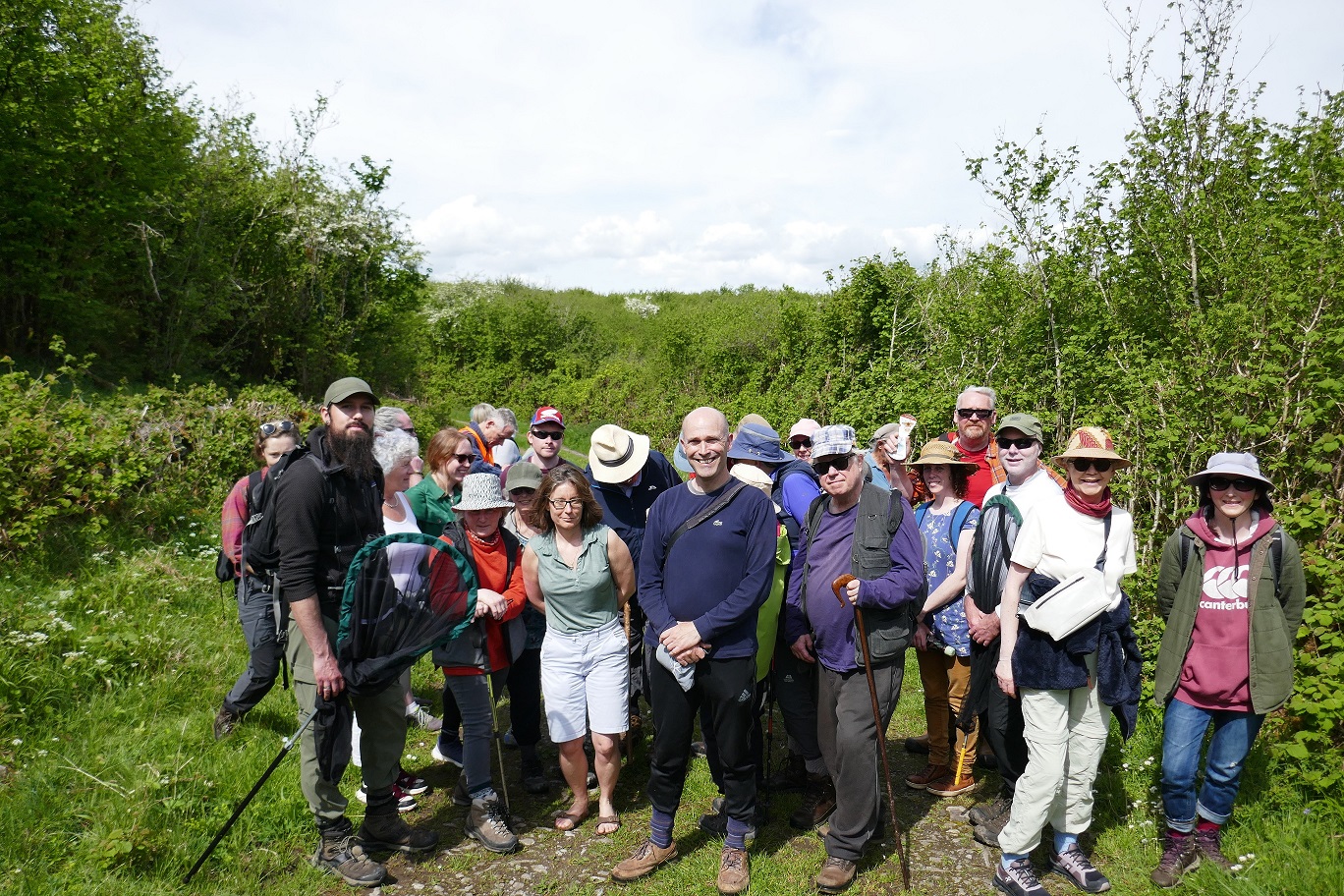
Happily, Saturday gave us excellent weather especially in the morning after the mist dissipated and up to mid-afternoon after which it clouded over.
Our large, enthusiastic group of Burrenbeo Trust and Butterfly Conservation Ireland members assembled at Crevagh to walk the green road through Clooncoose Valley. This road mainly runs east/west so it is open to sunlight for much of the day, and along much of its length it is sheltered by stone walls and scrub making it an attractive corridor for commuting butterflies. The broad roadside also contains resources such as basking platforms, nectar and larval foodplants, while these are also present, albeit in more exposed situations, in the adjoining landscape. In short, it’s perfect!
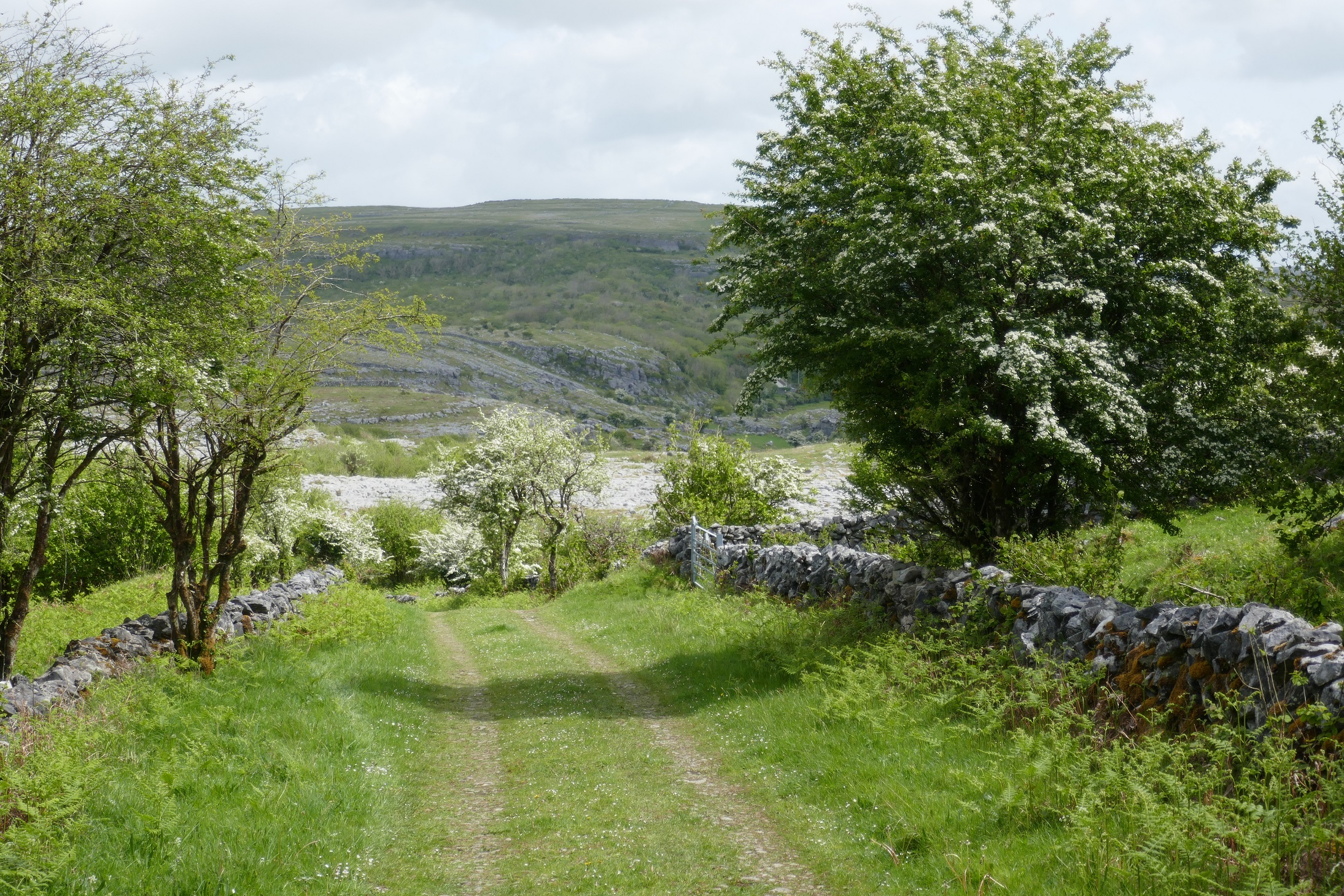
And it is great for walkers too, with a fairly level surface and magnificent views. At the gate, I showed photographs of the butterflies we hoped to encounter and off we went, chatting and sharing observations and stories on our stroll.
A male Wood White soon fluttered into view, bobbing ponderously but purposefully over vetch-rich verges, seeking his mate. Previously netted and jarred Wood Whites were passed around, while the story of its place in the Burren was described. The delicate greenery on its hindwing underside distinguishes our Wood White from the examples found in Britain and Europe, with theirs showing grey undersides. We spotted several more, all flying low or tasting nectar from wayside blooms. Ranked Vulnerable on the Irish red list, it felt reassuring to see it thriving here on The Burren’s Butterfly Road.
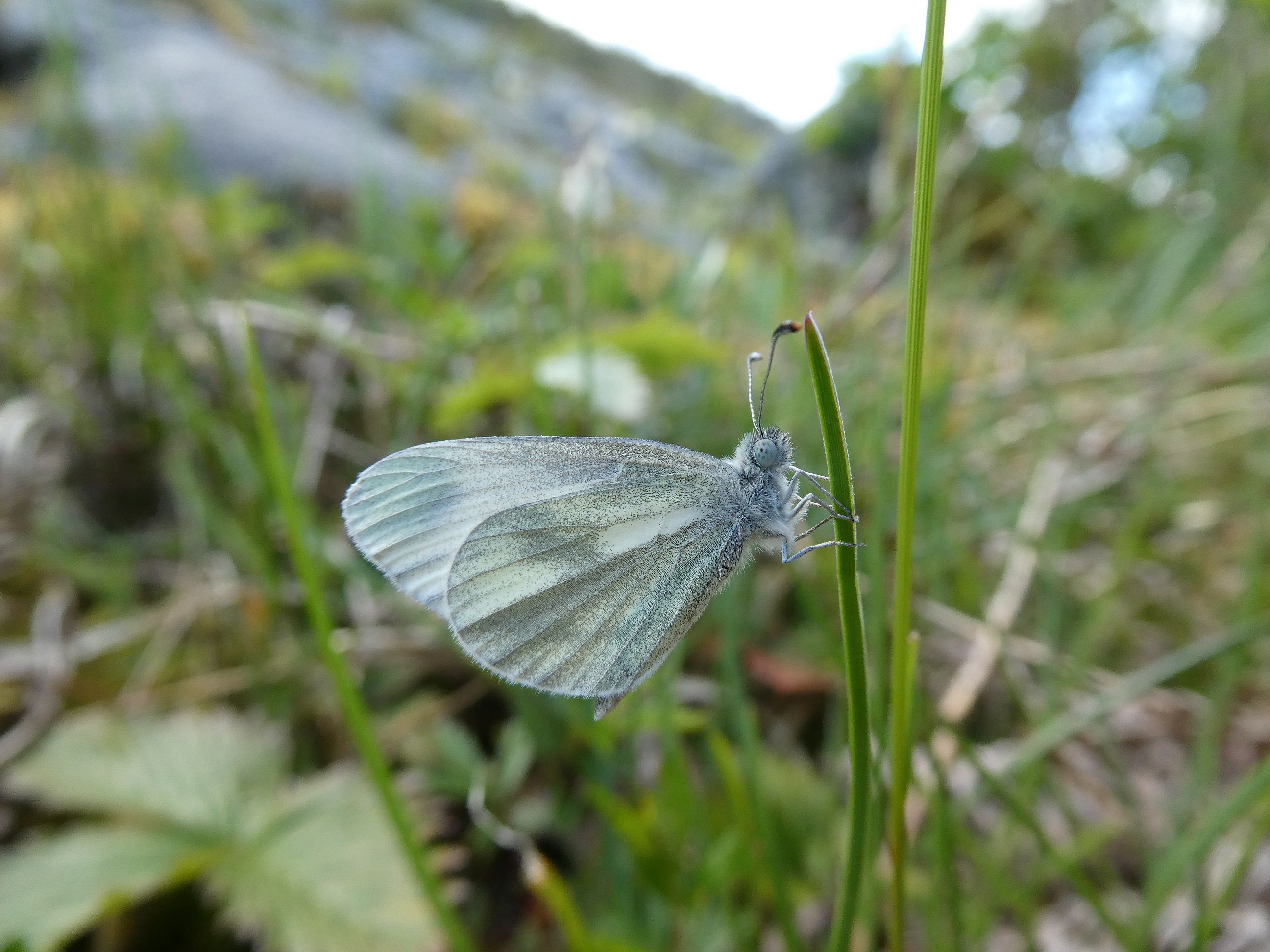
A companion species, in The Burren at least, is the even rarer Pearl-bordered Fritillary. This blue-eyed beauty is much sought after in Irish butterfly circles, with generations of butterfly lovers making the trek to Clooncoose to see it during the 100 years following its discovery in this area in June 1922. One dashed past, its deep orange uppersides drawing instant heed. One of our number netted the next commuter, another male. I jarred him to pass around, pointing out his blue eyes, deep orange upperside marked with velvety black chevrons, spots and lines, and his pearl-edged hindwing undersides. It is such a pleasure to see people’s reactions to a creature of immense beauty.
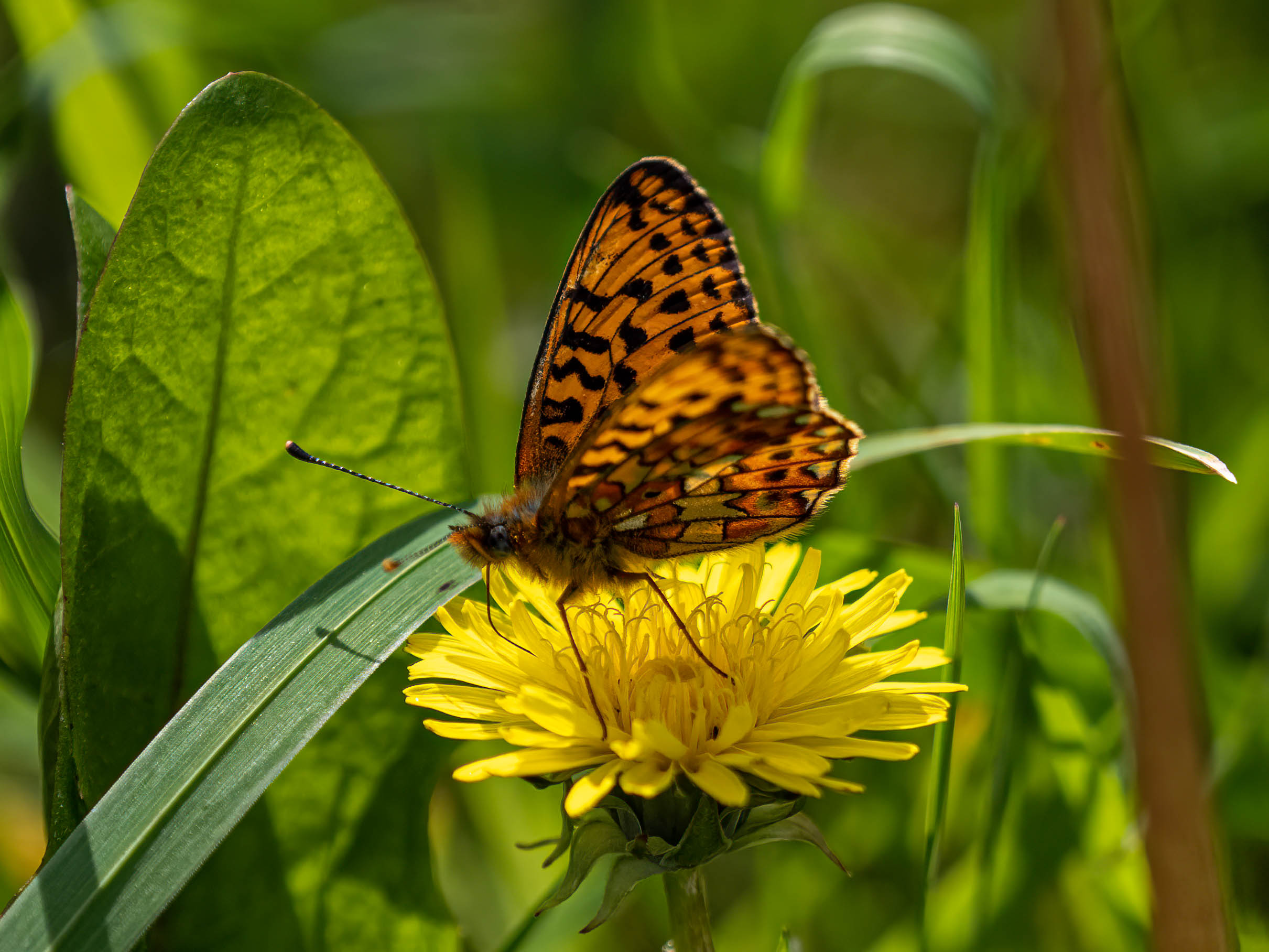
We released him and more appeared, and the green road became a catwalk with admiring photographers snapping basking, and feeding Pearl-bordered Fritillaries. All seen were males, all in perfect condition; the females were yet to emerge; this showed it was early in their flight season. This butterfly is highly dependent on weather conditions with emergence dates significantly influenced by prevailing temperatures. In warm springs, it hatches during April.
In a cool spring, this endangered butterfly will not be seen until May, and the lack of sightings at Fahee North the following day showed it to be significantly later than in several previous years, such as 2007 and 2009 when it was abundant during April. According to data from UK Butterfly Monitoring Scheme, it has suffered a 72% abundance decline 1978-2019 and a deeply alarming 91% distribution decline 1982-2019. These are horrifying statistics. We don’t want to see this anywhere, but in Ireland the species is in the ‘Burren Only’ category so the Burren must continue to be treasured and managed according to its ecological need for open scrub on limestone.

Another must-see was the Dingy Skipper, represented in the Burren by subspecies baynesi, a paler form than found elsewhere, neatly adapted to its limestone homeland. This active creature was soon apprehended and passed over for inspection. A specimen from Kildare was shown for highlight the contrast in the depth of colouring. The uniqueness of the Burren form of this spring skipper provides a further impetus towards conservation of this magnificent landscape.

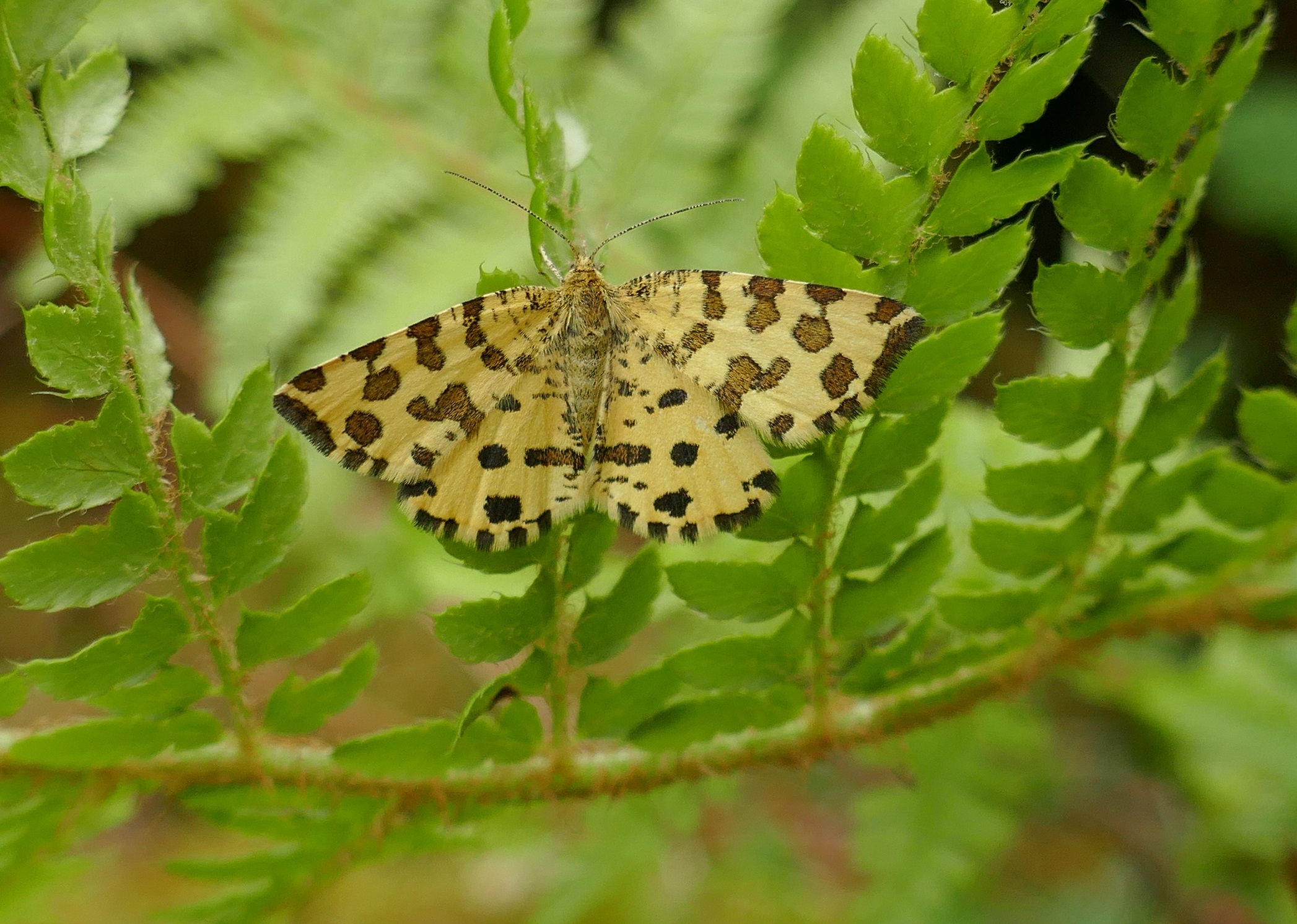
Green-veined White (the citral perfumed wings drew much interest) Small Copper (tiny but gorgeous), Red Admiral, Peacock, Speckled Wood were also viewed along with the butterfly-like Speckled Yellow moth, really abundant in Clooncoose. We were even treated to great views of an oblivious Red Fox, who couldn’t care less that he was under close observation.

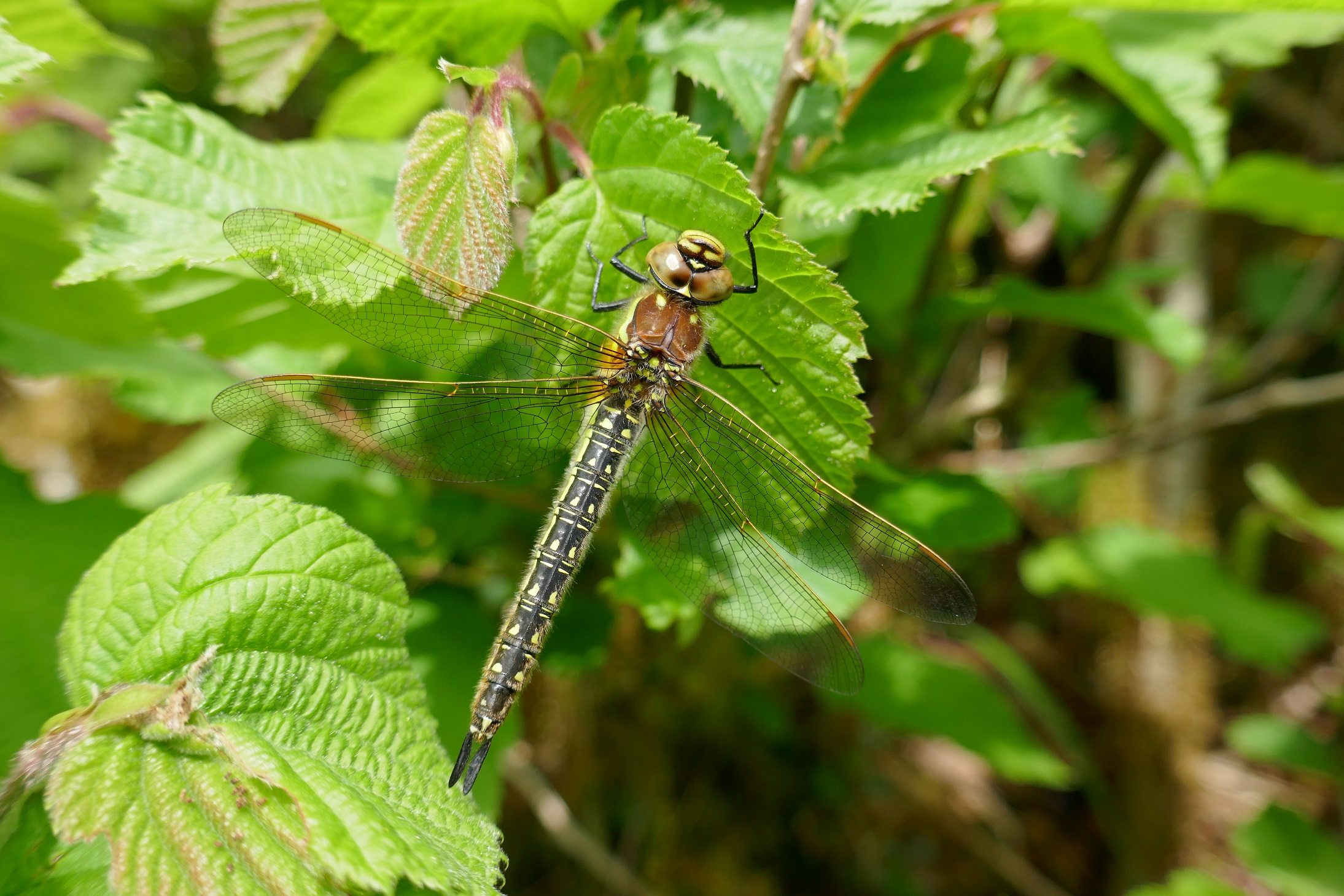
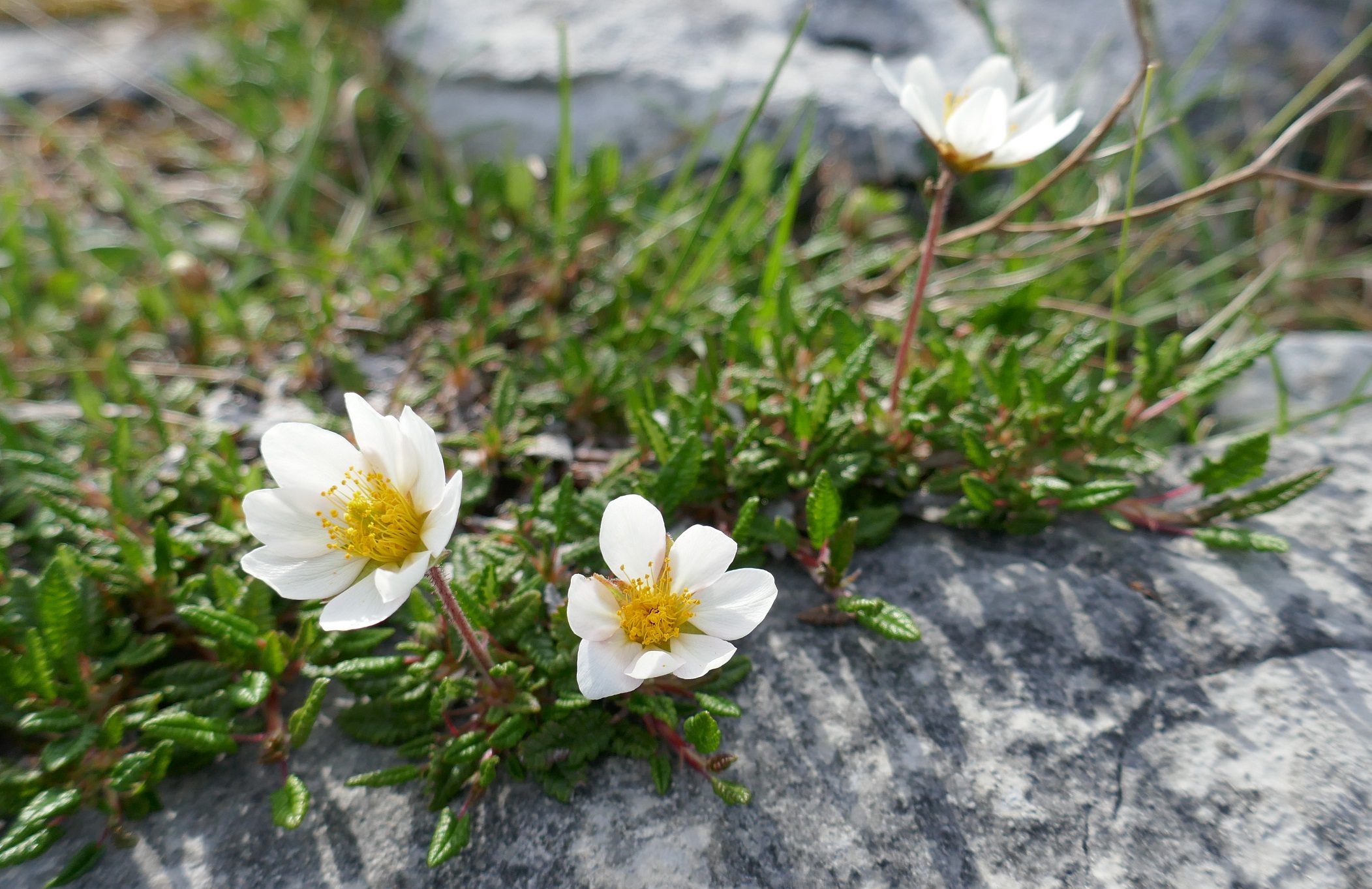
The following day’s outing at Fahee North, near the Burren Perfumery involved a walk on a Marsh Fritillary breeding area on wet grassland and an adjoining area of scrub, limestone grassland and shattered limestone pavement. The weather was dry, with some sunshine but quite cool in a brisk westerly wind.
While butterflies kept their heads down during our outing, we did see great habitat that holds important populations. We saw a Marsh Fritillary caterpillar on a leaf of its foodplant, Devil’s-bit Scabious, and several Transparent Moth caterpillars on thyme growing on a well-developed ant hill. The Transparent Burnet is an attractive day-flyer, and very abundant in the Burren but rare elsewhere in Ireland.
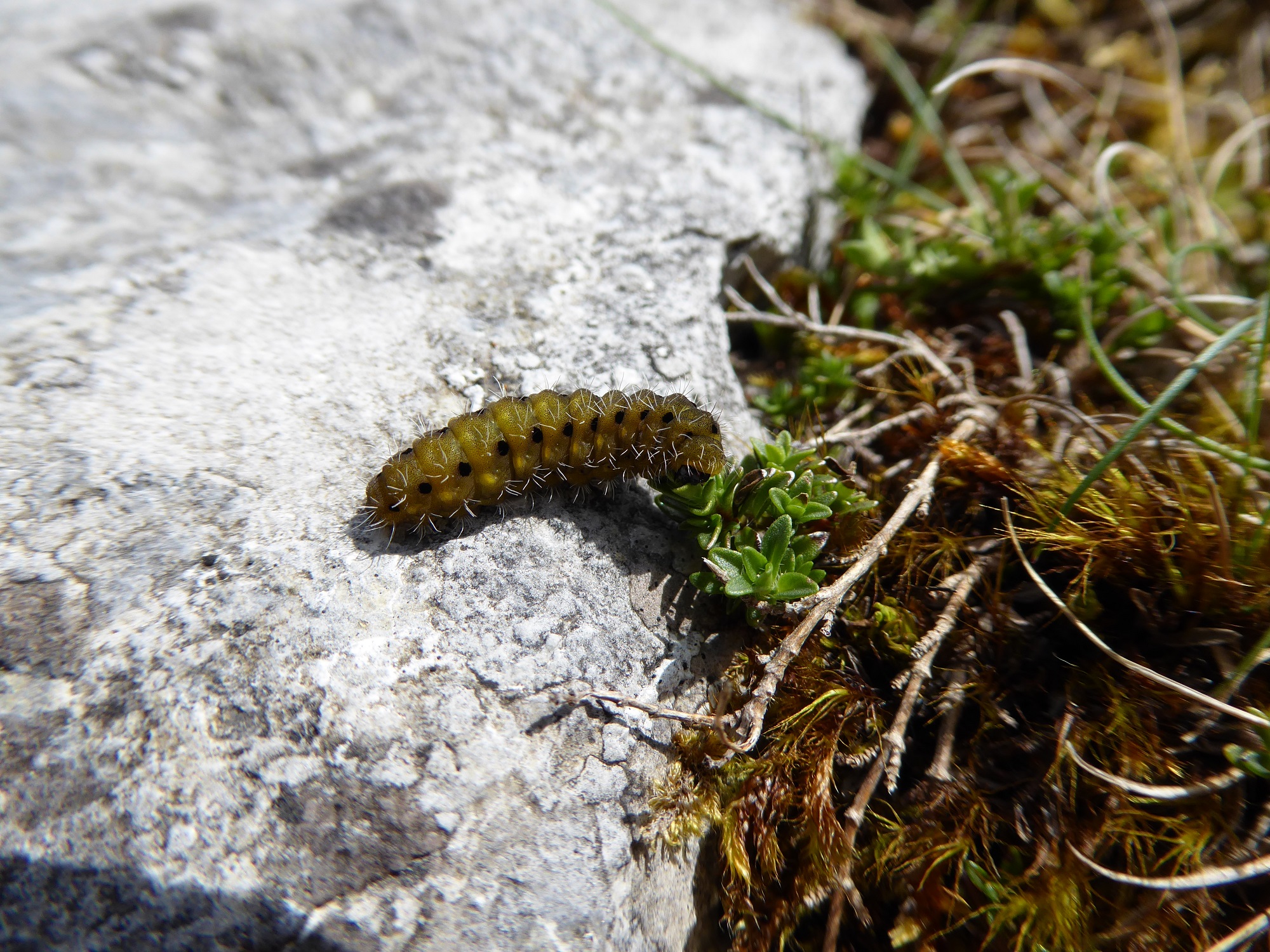
J. Harding

We looked closely at the habitat and ecological needs of the Pearl-bordered Fritillary on the open scrub on the limestone adjoining the Marsh Fritillary breeding site, and why the continuum of habitat provided by a well-managed Burren is crucial to the long term survival of our rarest butterflies and moths.
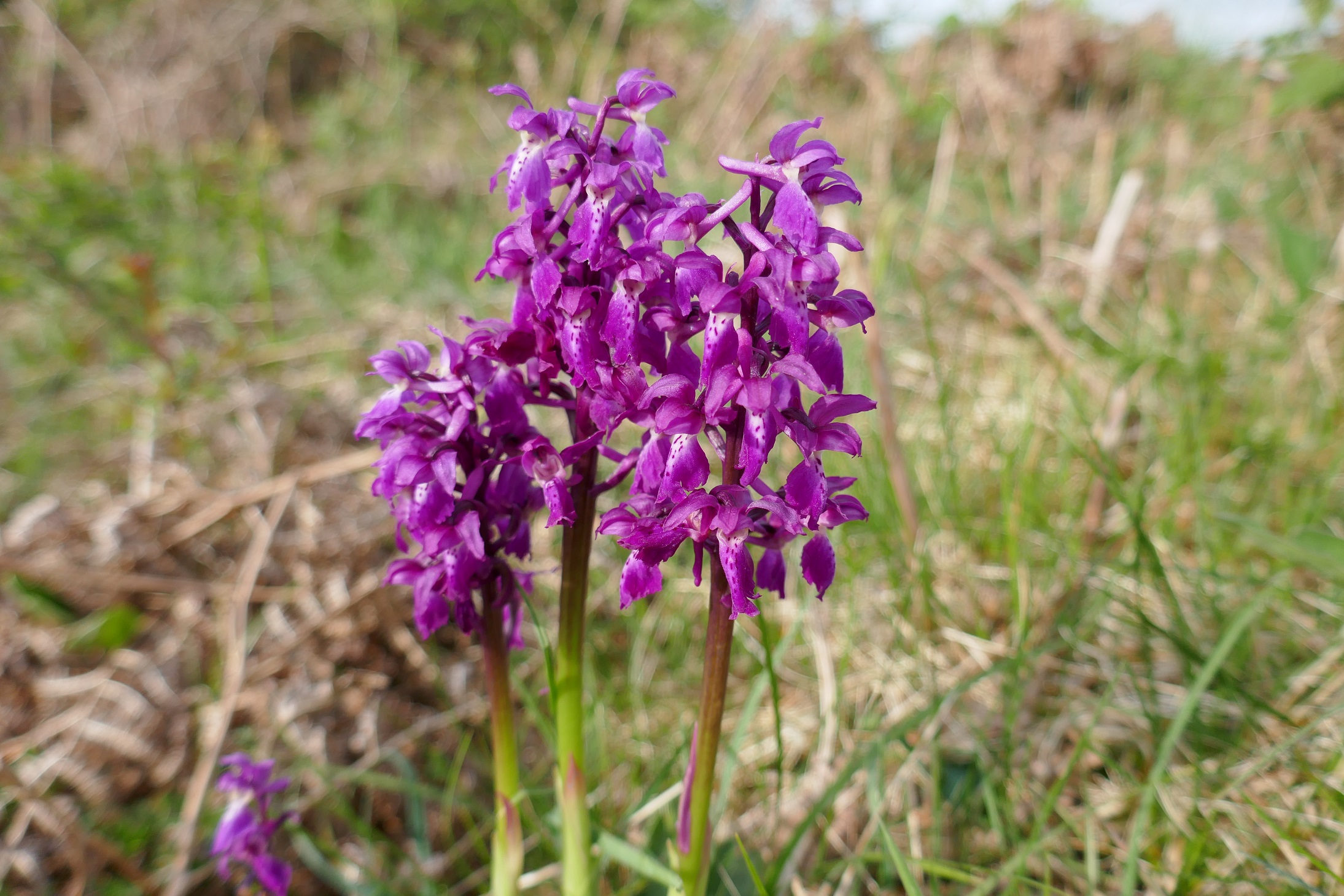
It was a thoroughly enjoyable weekend, made special by the great company in the most special landscape Ireland has to offer.
Thanks to all who attended, especially to Pranjali from Burrenbeo Trust who helped to organize these events.

